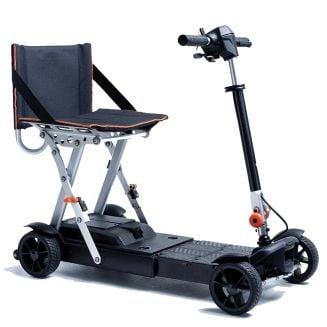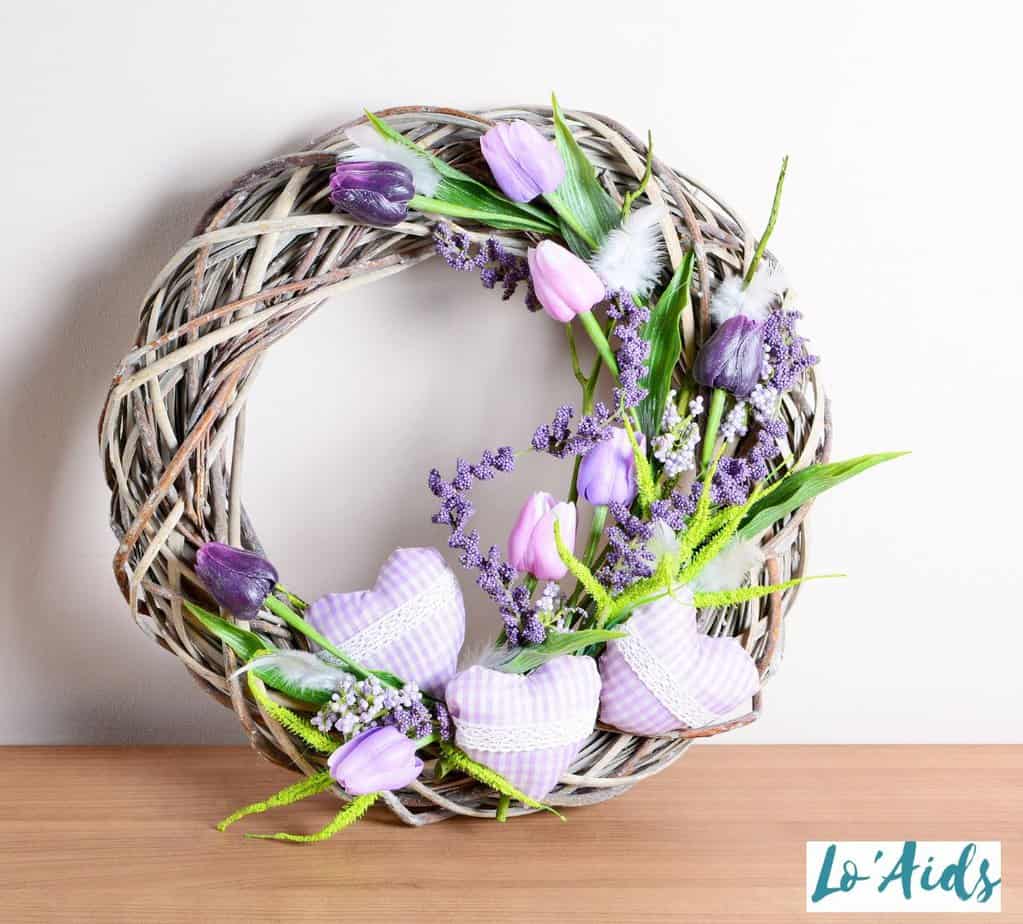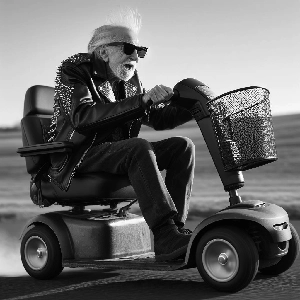Different types of walkers are intended for different types of uses.
While all walkers are mobility aids usually associated with seniors and older individuals, walkers come in a wide variety of designs that are intended for different kinds of situations.
The key to walkers is to know what kinds of walkers there are and know what they are intended for.
Not all walkers are designed equally so it would be better to be familiar with some key information before making a final decision on what particular type of walker you will be needing.
READ MORE: How to Use a Rolling Walker Properly?
Here’s a quick video overview.
Table of Contents
What Are the Different Types of Walkers?
When people read or talk about walkers, they usually think about just one type and that is the one with the four legs and the rubber tips.
There are, however, different kinds of walkers. All of them will have their advantages and disadvantages.
1. Standard Walker
The standard walker is the most basic type of walker. It is a mobility aid that is designed with four legs with rubber tips at the ends.
It has handrails at the top portion which may have soft or hard rubber foam to serve as handgrips.
This is an ideal walker for seniors who spend most time indoors and who already have balance issues when using a basic cane.

| Benefits | Drawbacks |
|---|---|
| Stable | Patient has to lift the walker with every step |
| Lightweight | Offers very limited mobility |
| Foldable models available for easy transport |
Related: How Much is a Walker?
2. Two-Wheel Walker
This type of walker is otherwise known as a rolling walker.
These are designed with two wheels at the front and two rubber tips legs at the back.
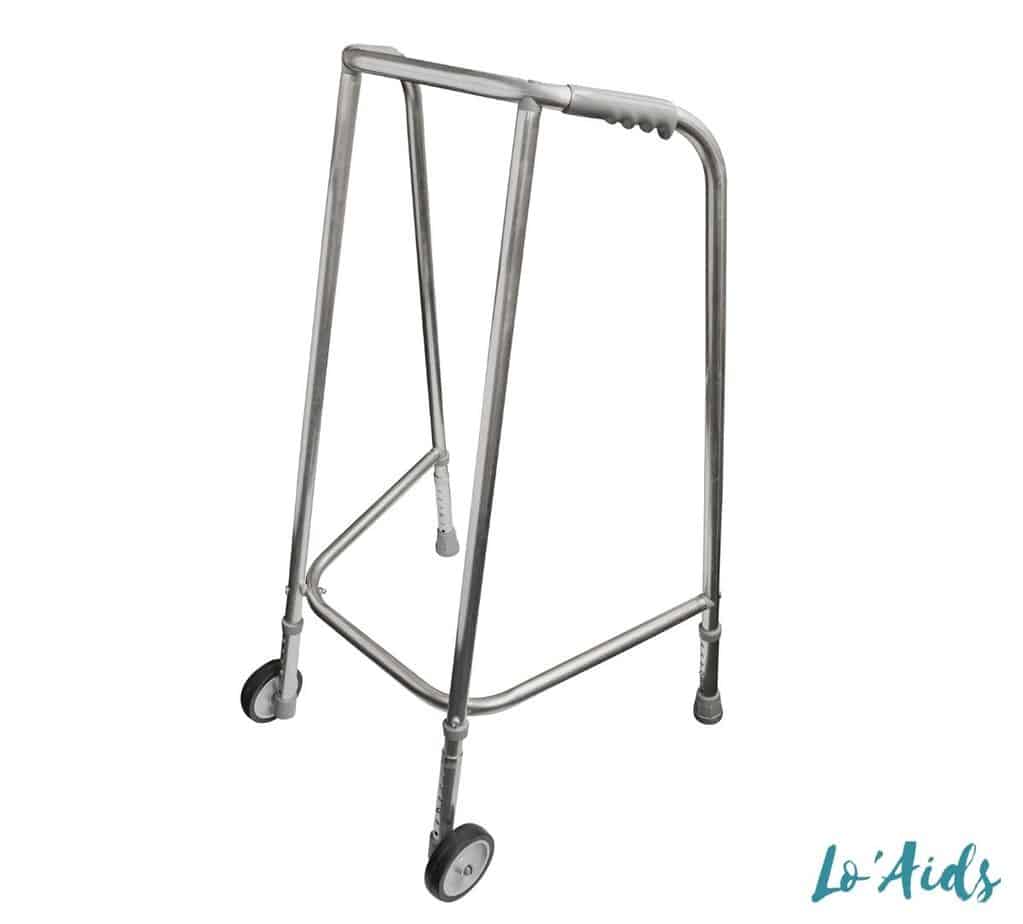
These may be used by individuals who have an unstable gait, but are still not suffering from poor balance.
| Benefits | Drawbacks |
|---|---|
| The individual can maintain a normal gait pattern since he does not have to lift the walker with every step | Not as stable as a basic walker |
| Easy to maneuver | Requires more coordination and mental awareness from patient |
| Foldable and lightweight | Front wheels do not rotate so it may require the patients more room to turn |
3. Rollator Walker
The rollator walker comes as either a three or four-wheeled rollator with the three-wheeled version built quite similarly to a tricycle.
All the wheels can completely rotate making it quite easy to maneuver.
It comes with a seat, an under-seat storage pouch where personal items can be kept, and a handbrake for extra safety.

This makes it quite convenient to use as a mobility aid since the seats themselves are quite useful for individuals who do a lot of outdoor movement while needing frequent stops or rests.
A modified version of rollators is a stand up walker for adults. These are designed so that the individual can lean on the walker for added support.
They are designed to serve as outdoor walkers as well, which is perfect for seniors who like spending time outdoors. They come with an adjustable height option for added comfort.
With regards to the seat though, it should be important to take note that the seats have a certain weight capacity depending on the material from which the rollator or walker is made. The lighter the material, the less weight capacity.
| Benefits | Drawbacks |
|---|---|
| Ease of movement | Difficult to control |
| Improved mobility | Brake is meant to only slow down the movement if a rollator |
| Better functionality due to seat and storage pouch | Not for individuals with unstable gait |
Check: Best Three Wheel Walkers Seniors
4. Knee Walker
While walkers or rollators were designed with seniors in mind, a knee walker or knee scooter is another type of mobility device with an entirely different purpose.
It has been designed mainly for people who may have developed mobility issues due to injuries below the knee. Examples of these conditions are fractures, leg injuries, wounds due to diseases like diabetes, etc.
A knee scooter is designed with an elevated platform where the patient can rest his injured limb.
Movement is created by using the good leg to push the device while allowing proper maneuvering of the assistive device through the handlebars.
The individual is then able to balance himself much better while using this device compared to when using forearm crutches.
ALSO CHECK: What Is An Upright Walker?
Cane
Although not considered to be a walker, a cane is still a mobility aid that can greatly help those who are in need of minimal assistance.
There is a huge variety of canes available in the market with differences mainly in the hand grips that they have.
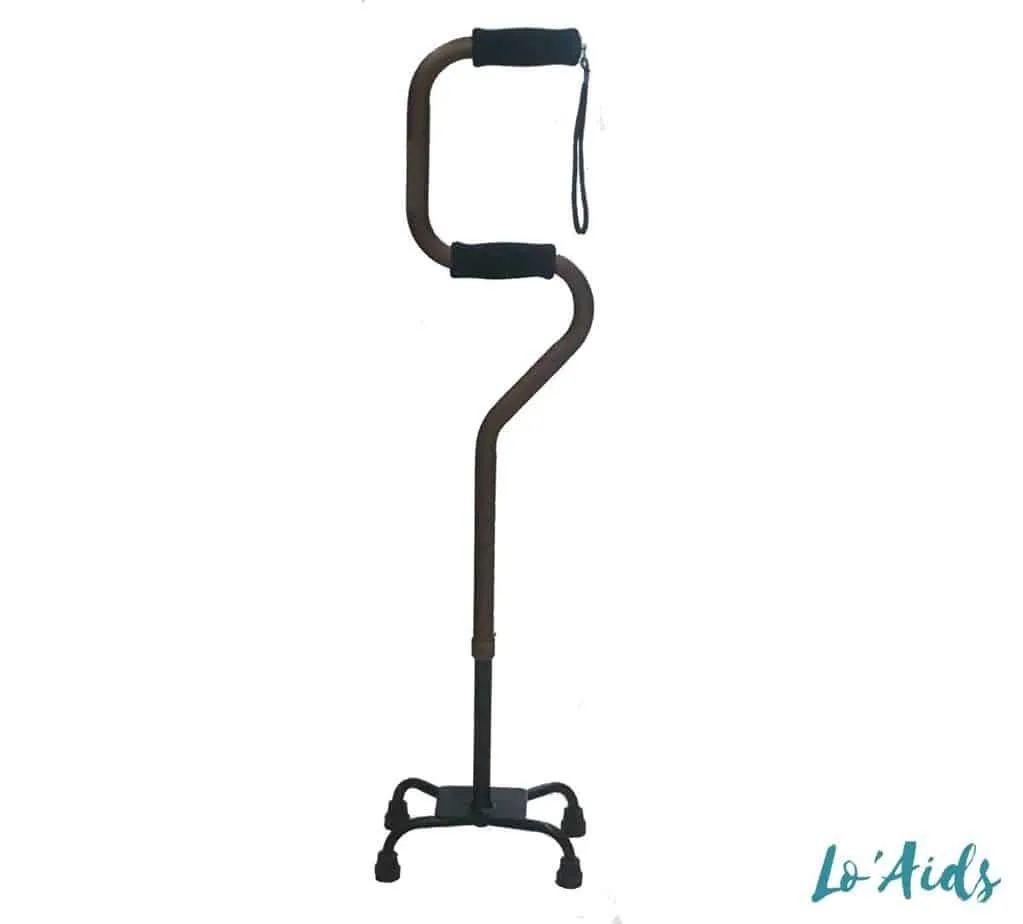
ALSO CHECK: Narrow Walkers for Seniors
What to Look for When Selecting Walkers From Any of These Types?
There are key points to look for when choosing a walker in order to find out which is the most suitable for you.
Not only will it make life more convenient for the user, but it will also ensure maximum safety during use.
Don’t forget to check where to buy a walker near you!
Make Sure the Walker is Adjustable
The height, width, and size of the walker will all contribute to ease of use.
Make sure the walker you plan to buy has an adjustable handle height so that it can meet the proper height of the person whom the walker is meant for.
Incorrect height may lead to problems with posture later on.
Read our guide about the correct height for a walker to learn more.
Make Sure it Will Be Stable Enough for the Person Who Will be Using the Walker.
Always take into consideration the gait and any balance issues that the individual may have. For a person with a natural gait and minimal balance issues, a rollator would be a practical choice.
For a senior who may have balance problems, a standard walker would be a better choice.
Check the Weight Capacity
Different makes of walkers as well as the different materials they are made from make a difference when it comes to transport and mobility. However, it also is related to just how heavy a load it can handle.
The type of mobility aid that you plan to purchase must be able to handle the weight of the person it is to assist.
For persons who weigh more than 300 pounds, there are walkers called bariatric walkers which may be able to handle that weight range.
Consider Your Lifestyle
If the person has an active lifestyle and is inclined to spend much time outdoors, it would be more practical to get a foldable walker. Foldable walkers are easier to transport and are more lightweight than fixed ones.
Choose One With Good Handgrips.
While it may seem trivial, the design of the handgrip greatly affects comfort when using a walker.
Contoured hand grips or ergonomic handgrips make it easy to hold the walker, especially since the hand is a weight-bearing area.
Non-slip hand grips contribute greatly to safety and are a must when choosing a walker.
Check this helpful video:
CHECK: How Much to Rent a Walker
FAQs
What’s the difference between a rollator and a walker?
Although both are considered to be mobility devices, rollators are actually four-wheeled walkers. A regular walker will come with only two wheels or even none at all. With the presence of four wheels, a rollator as an assistive device can provide better mobility to the user.
What type of walker is best for the elderly?
It depends on how coordinated the individual is. If the person has no mobility issues, a rollator will greatly aid in the individual’s ability to move around, especially when used outdoors. For seniors with many balance issues who mostly stay indoors, a standard walker is the best option.
Conclusion
While getting into an injury is avoidable, getting old is inevitable. Getting older though doesn’t necessarily mean that one should be left without an option when it comes to movement.
Walkers and rollators are mobility aids that can greatly help a senior who wants to continue living life to the fullest.
Aging shouldn’t limit one’s sense of independence, much more one’s ability to move. It also shouldn’t compromise one’s safety during movement. Getting a walker is one of the best ways to be assured of this.
References
- Hernandez, Cameron. n.d. “ELDER CARE a Resource for Interprofessional Providers Choosing the Correct Walker.” https://nursingandhealth.asu.edu/sites/default/files/walkers.pdf.
- “How to Use a Walker.” 2019. Cleveland Clinic. 2019. https://my.clevelandclinic.org/health/articles/15542-how-to-use-a-walker.
- Lindberg, Sara. 2021. “Best Walkers for Older Adults: Key Features and Recommendations.” Healthline. Healthline Media. April 2021. https://www.healthline.com/health/best-walkers-for-seniors#how-we-chose.

Which types of walkers do you use? Let us know in the comments below!

